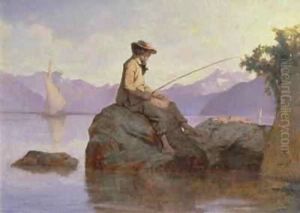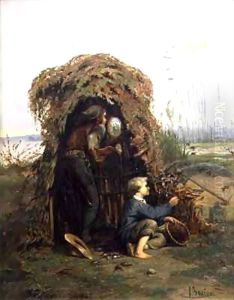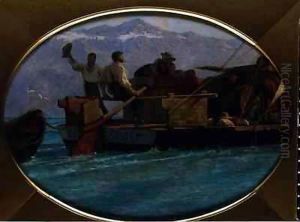F.L.D. Bocion Paintings
François-Louis David Bocion, much more commonly known as François Bocion or F.L.D. Bocion, was a Swiss painter known for his landscape and marine paintings that often highlighted the region around Lake Geneva. Born on April 15, 1828, in Lausanne, Switzerland, Bocion showed an early interest in art that was supported by his environment and education.
In his formative years, Bocion trained under the guidance of Louis-Victor Gesta and Marc-Louis Arlaud, two well-regarded artists of the time. He continued his artistic education in Paris, where he was influenced by the French school of painting, which was evident in his style that combined elements of Romanticism and Realism. This experience in Paris was crucial, as it exposed him to the work of contemporary artists and the evolving trends of the European art world.
Bocion’s work was marked by a fascination with light and its effects on the natural and built environment, a characteristic that aligned him with the plein-air painters of his time. His paintings often depicted scenes of everyday life around Lake Geneva, including fishermen at work and leisure activities of the local population, imbued with a sense of tranquility and a harmonious relationship between humans and nature.
Throughout his career, Bocion was active in the art community, participating in numerous exhibitions. His work was recognized in Switzerland and abroad, and he became one of the prominent figures in Swiss landscape painting in the 19th century. Despite being less known internationally compared to his contemporaries, his paintings were well received, and he was considered a leading artist in his homeland.
François Bocion never married and spent much of his life traveling between Lausanne and Paris. He died on December 21, 1890, in Lausanne. Although Bocion has not achieved the same lasting fame as some of his peers, his contribution to Swiss art is significant, and his works can be found in museums and collections in Switzerland and beyond, providing a picturesque view of 19th-century life in the region he loved and captured so effectively on canvas.


